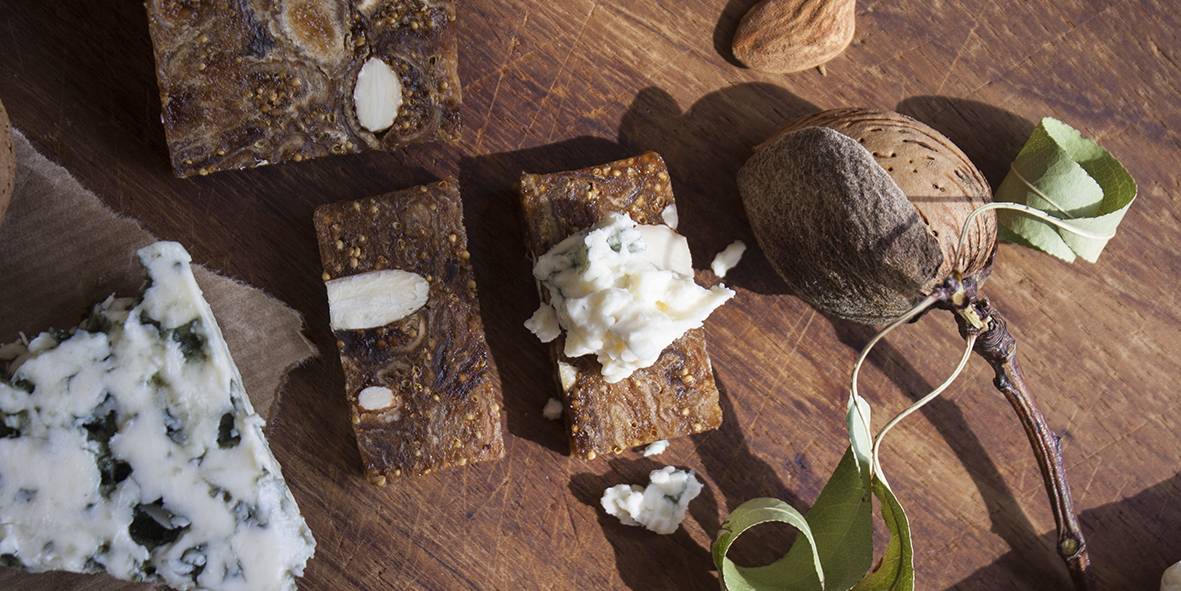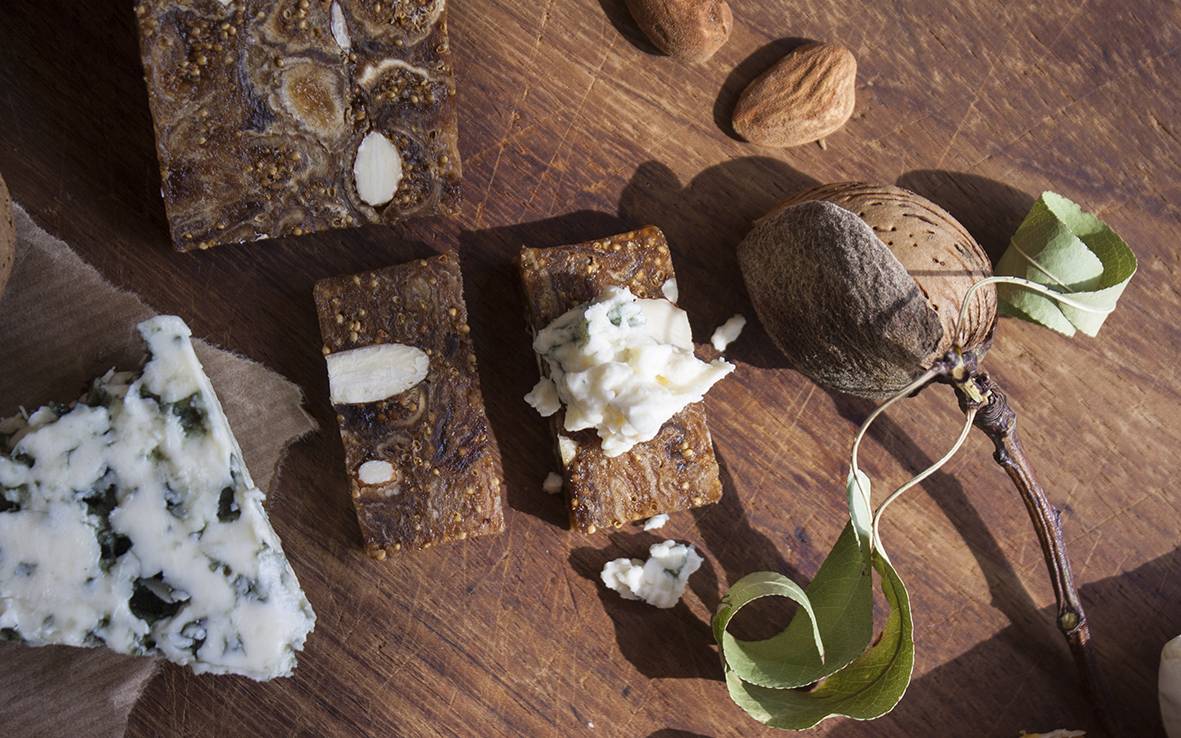Pan de higo: origin, ingredients, properties and much more
Pan de higo is one of the most traditional recipes in our country. An incomparable flavour and optimum nutritional values strike the perfect balance in this well-known food people have been appreciating since the Middle Ages.
Indeed, our country has the great fortune of having authentic gastronomic jewels, nutritious and exquisite delicacies used in recipes such as those we are discussing today. Figs have a long history in the Iberian Peninsula and have been enjoyed by the successive cultures that have settled across our land.
Not only are we a land of figs but also of the most highly praised varieties of fig due their flavour and presence in the kitchen. One of the most noteworthy of which is Calabacita, also known as Pajarero, one of the most sought-after varieties, the use of which in the preparation of Pan de higo gives rise to an authentic gourmet food.
The aromatic and sweet flavour of figs is, to a large extent, why they are so highly treasured. But where did the recipe for Pan de higo first come from? The truth is that the origin of Pan de higo is so remote that it has been lost in time, although it is believed that the Arabs were the first to introduce it to their cuisine.
This and many other interesting facts relate to one of the most nutritious, tasty and healthy recipes in Mediterranean cooking. Would you like to find out about them? Keep reading.
The origin of Pan de higo
Let us travel back to the time of Al-Andalus.
Arab culture left behind numerous contributions and advances in different areas of day-to-day life. With regard to crops, they introduced a wide variety of plants that greatly enriched our gastronomy. Sugar cane, rice, citrus fruit - such as Seville oranges - vegetables and fruit, including figs, were introduced by the Arabs and would stay with us forever.
The figs grown in Al-Andalus were so highly thought of that they were even exported to the Far East. The appreciation of these figs led to the preparation of delicious dishes and desserts. Indeed, a large part of the sweets and desserts we still eat today date directly back to the gastronomic culture nurtured in the Al-Andalus period.
Pan de higo first appeared at this time and was associated with peasants. Its high nutritional value and energy content helped peasants get through their tough day-to-day routines. Moreover, Pan de higo was an excellent way of preserving any surplus of figs from the harvest. Ever since, generation after generation has enjoyed Pan de higo as one of the most popular recipes due its properties, benefits and flavour.
Would you like to get to know the ingredients? We will teach you about the composition of Pan de higo.
The ingredients of Pan de higo
One of the major attractions of Pan de higo is the fact you can make it yourself, using additional ingredients such as dried fruit or candied fruit in the original recipe. There is only one mandatory ingredient, and that is figs. We recommend you use top quality, tender, juicy figs with fine skin.
Although, as we have already mentioned, you can make your own Pan de higo, you will find companies that specialise in the preparation of this food, some of which have a long artisanal tradition in the production of this gourmet product.
In this sense, we at Paiarrop specialise in the traditional production of Pan de higo, using two top quality ingredients: pajarero figs and Marcona almonds, two products grown in our country that will take you back to the origins of this tasty recipe.
The properties of Pan de higo
The nutritional properties of Pan de higo are as numerous as they are beneficial. The truth is that they promote the health of your body as a whole. From strengthening the bones to enhancing the appearance and health of your skin, the consumption of Pan de higo is one of the healthiest aspects of the Mediterranean diet.
Rich in minerals and vitamins
Pan de higo contains a genuine explosive mix of vitamins and minerals. Among the latter, we should highlight calcium, essential for the bones; magnesium, which helps the muscles and the nervous system function correctly; iron, which helps maintain a healthy red blood cell count, and potassium, which is enormously beneficial for your brain.
In turn, Pan de higo has varying amounts of vitamins A, C, D, E and B. The presence of these vitamins has numerous health-related benefits, especially for your skin.
Source of energy
One of the most popular benefits of Pan de higo is its energy content. This is why it is revered by athletes. Indeed, Pan de higo is the healthiest alternative to energy bars.
Satiating effect
The daily intake of 2 to 3 servings of Pan de higo promotes the control of your appetite due to its satiating effect. As such, Pan de higo is an ally when it comes to fighting excess weight, helping you to stay in shape and even lose weight.
It promotes digestive health
Pan de higo contains a significant amount of fiber, which has a mild laxative effect on the body. Hence, it regulates bowel movement and prevents constipation issues in a completely natural manner.
It takes care of your heart
Thanks to the minerals present in figs, consuming this food helps regulate levels of cholesterol and glucose in the blood. In fact, the consumption of figs helps your body eliminate bad cholesterol, thereby minimising the risk of suffering from cardiovascular diseases.
Pan de higo has been part of the Mediterranean diet for several centuries. Its beneficial properties and exquisite flavour are two compelling reasons to start including this recipe in your diet. Why are you waiting to try it? Take care of your health and well-being with the wonderful flavour of Pan de higo.

